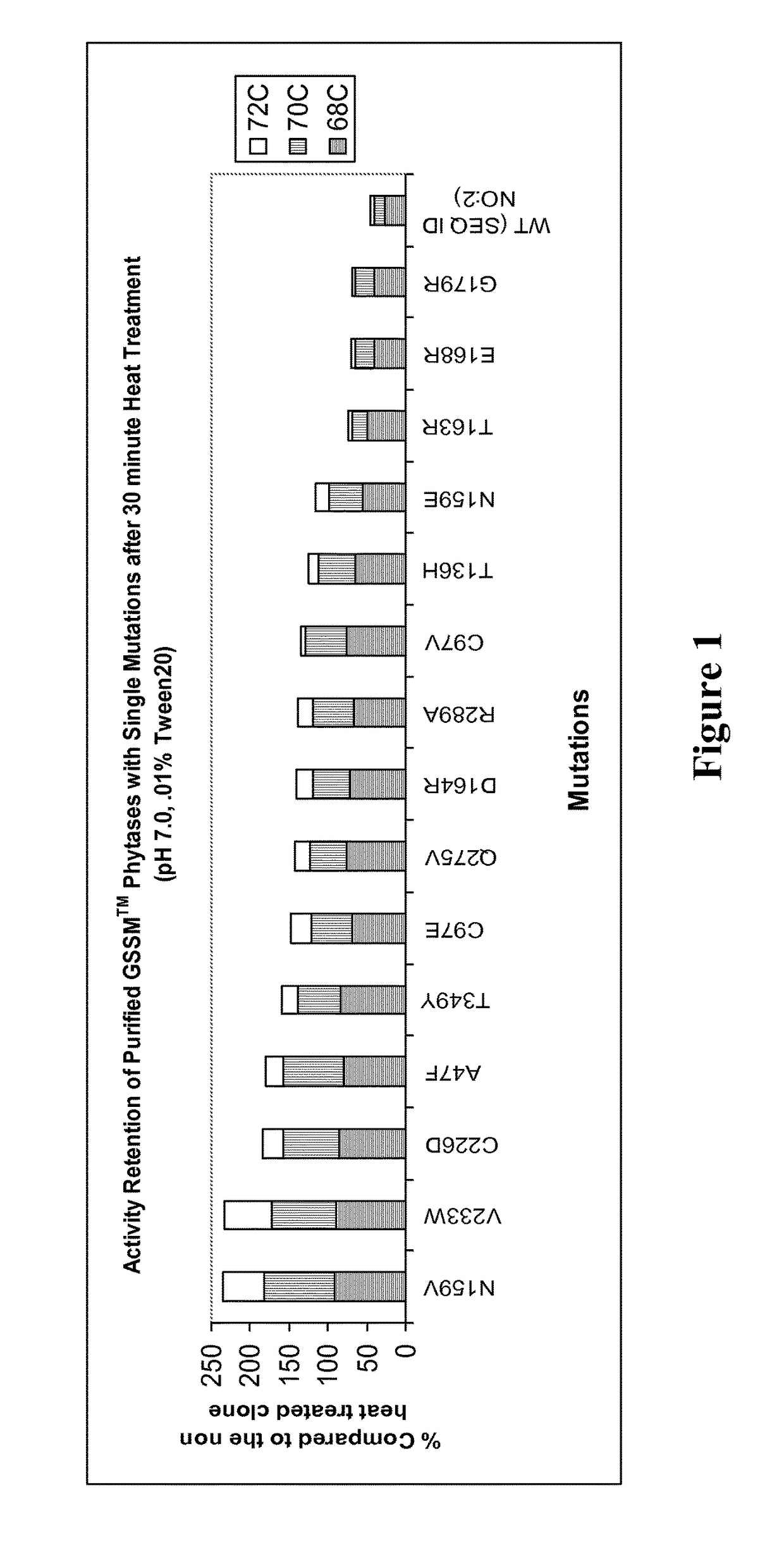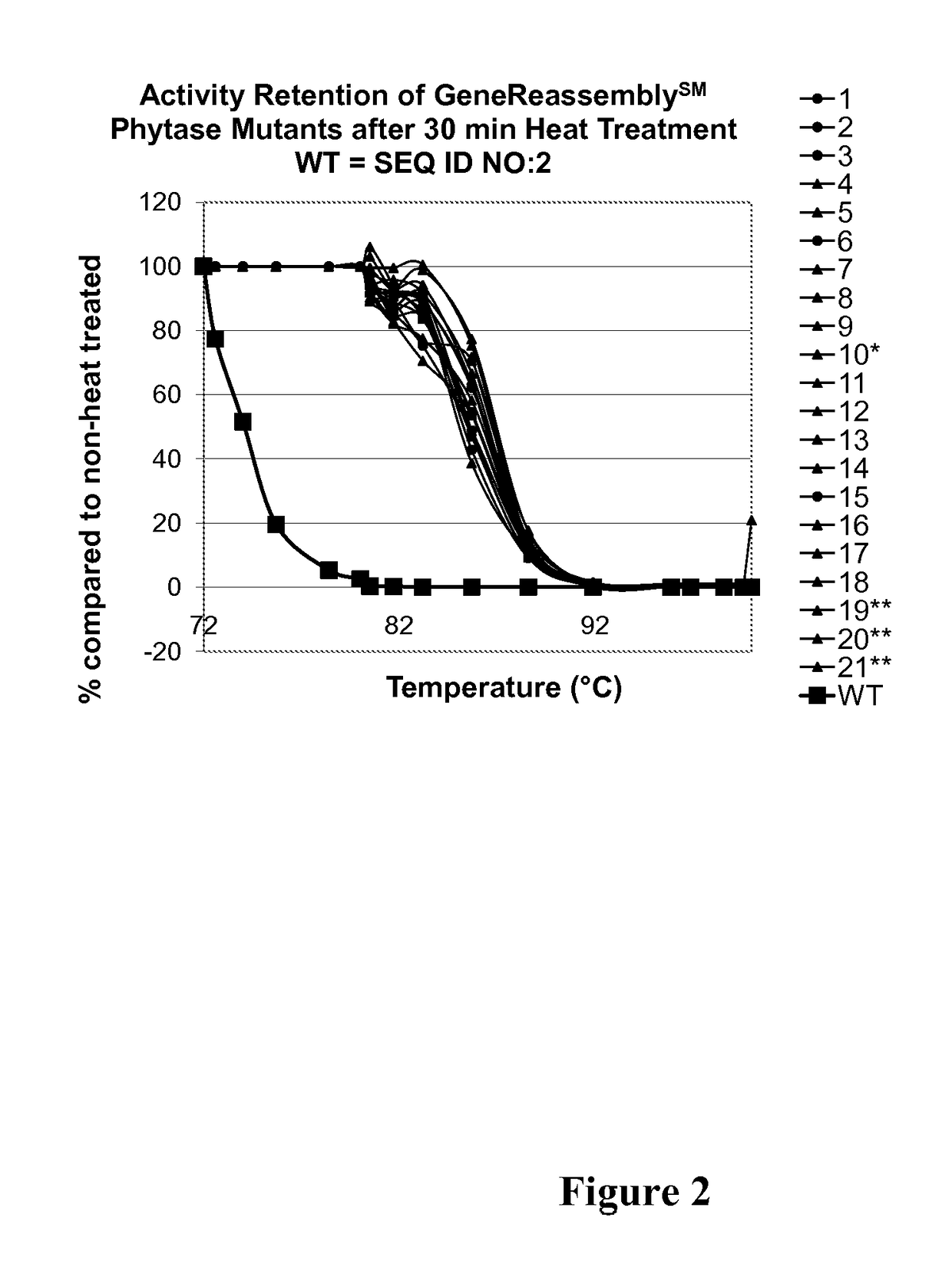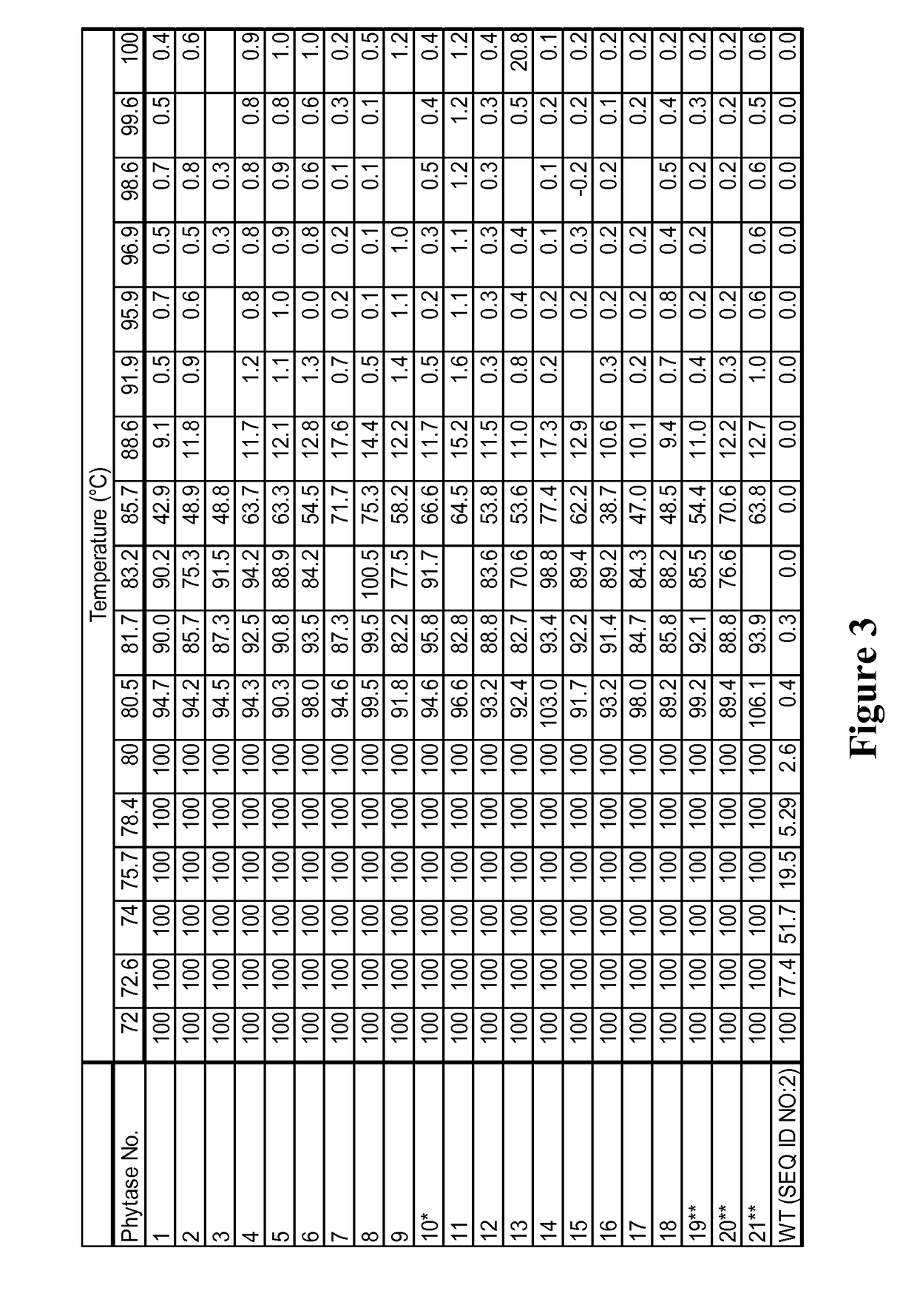Phytases, nucleic acids encoding them and methods for making and using them
a technology of nucleic acids and phytases, applied in the field of phytases, polynucleotides encoding them, can solve the problems of many problematic burdens, inability to efficiently utilize phytate-associated minerals, and species of farmed organisms, so as to improve the feeding value of phytate-rich ingredients, reduce the cost of phytase products, and facilitate the digestion of phyta
- Summary
- Abstract
- Description
- Claims
- Application Information
AI Technical Summary
Benefits of technology
Problems solved by technology
Method used
Image
Examples
example 1
Characterization of Exemplary Phytases of the Invention
[0724]This example describes characterizing the phytase activity of polypeptides of the invention, which are sequence modifications (the so-called “evolved” phytases) of the parental phytase SEQ ID NO:2, and an exemplary phytase activity assay. This phytase activity assay can be used to determine if a polypeptide has sufficient activity to be within the scope of the claimed invention.
[0725]After generating the polypeptides of the invention by expressing the GSSM-modified nucleic acid sequences of the invention, the “evolved” phytase polypeptides—only single residue mutation exemplary species in this study—were purified and then heat treated (pH 7.0, 0.01% Tween) at various temperatures for 30 minutes. After the heat treatment step, the samples (20 uL) were assayed with the fluorescence substrate (180 uL) 4 mM DiFMUP at pH 5.5. The rates were compared to the rates of each corresponding non-treated sample. Results are illustrated ...
example 2
nt of a Phytase with Increased Thermotolerance and Increased Gastric Lability
[0734]This example describes development and characterization of the phytase activity of polypeptides of the invention, which are further sequence modifications (the “evolved” phytases) of the parental phytase SEQ ID NO:2. The evolved phytases described herein have been optimized for plant expression and for broad-acreage commercialization. The phytases have better or equal thermal tolerance relative to the parental phytase (SEQ ID NO:2, encoded by SEQ ID NO:1) and decreased in vitro gastric stability (increased gastric lability).
Template Selection:
[0735]The selected GSSM backbone has both thermotolerance and evidence of SGF degradation. The evaluation began with testing the SGF properties of thirteen thermotolerant phytase molecules (as described in Example 1, above and Table 3, below). The SGF data on the purified phytases shows that all thermotolerant variants, including the single-site thermotolerant pa...
PUM
| Property | Measurement | Unit |
|---|---|---|
| gastric stability | aaaaa | aaaaa |
| temperature | aaaaa | aaaaa |
| temperatures | aaaaa | aaaaa |
Abstract
Description
Claims
Application Information
 Login to View More
Login to View More - R&D
- Intellectual Property
- Life Sciences
- Materials
- Tech Scout
- Unparalleled Data Quality
- Higher Quality Content
- 60% Fewer Hallucinations
Browse by: Latest US Patents, China's latest patents, Technical Efficacy Thesaurus, Application Domain, Technology Topic, Popular Technical Reports.
© 2025 PatSnap. All rights reserved.Legal|Privacy policy|Modern Slavery Act Transparency Statement|Sitemap|About US| Contact US: help@patsnap.com



